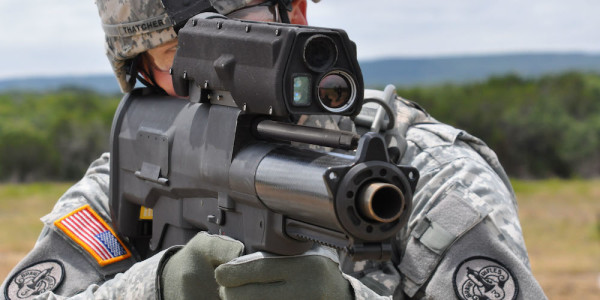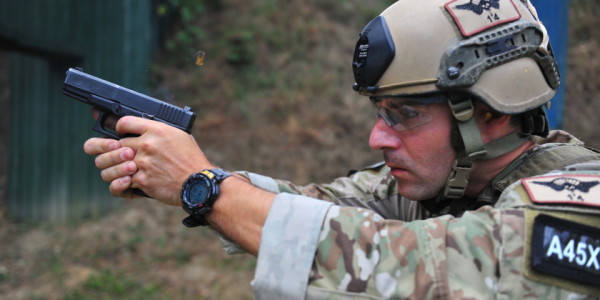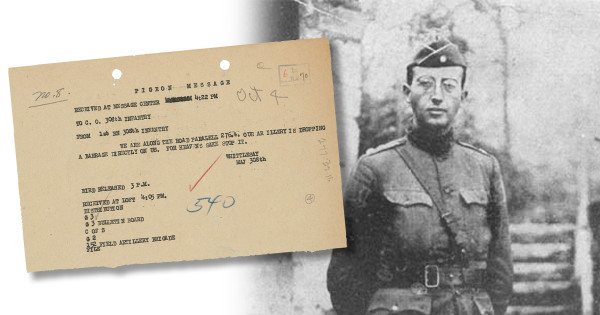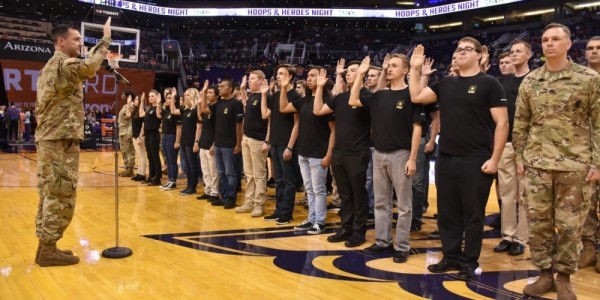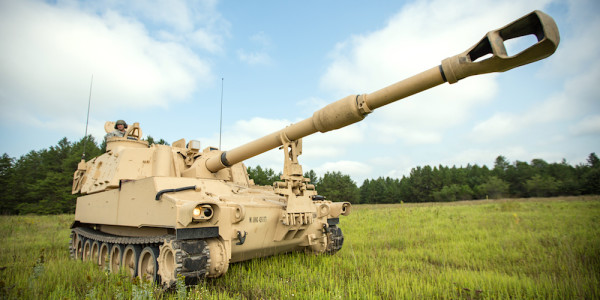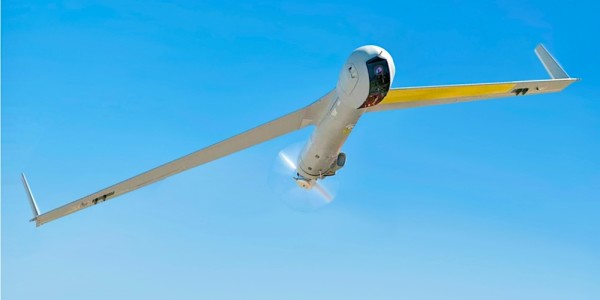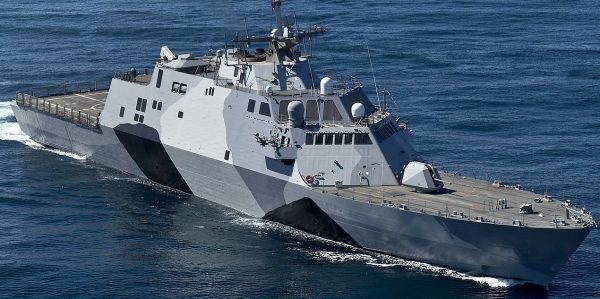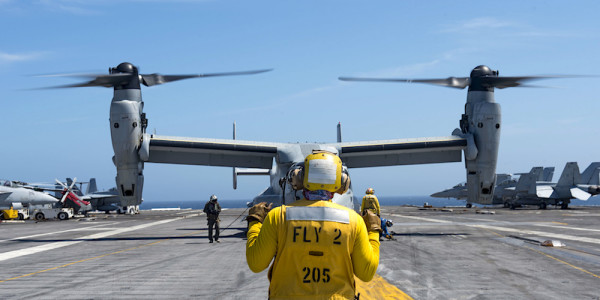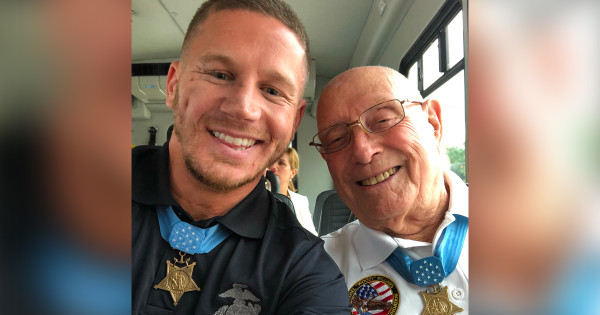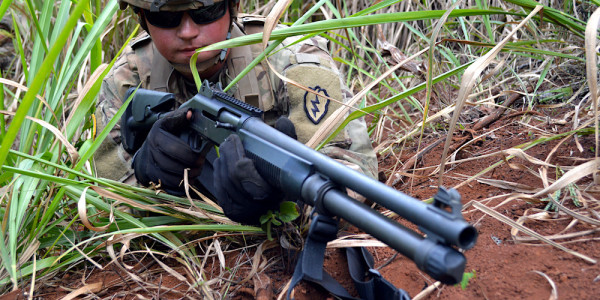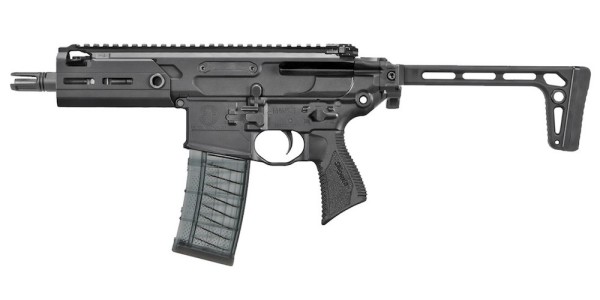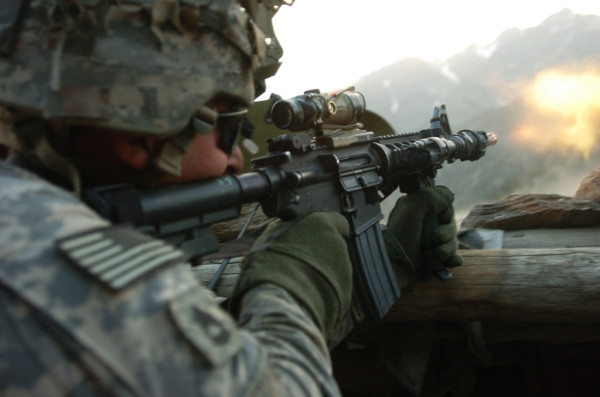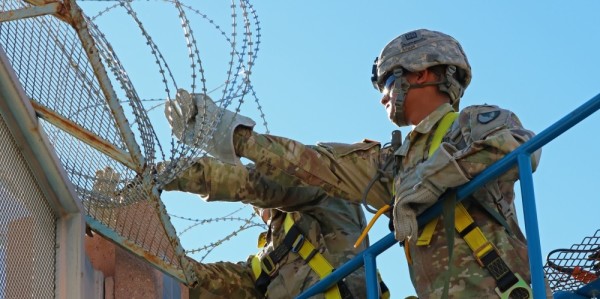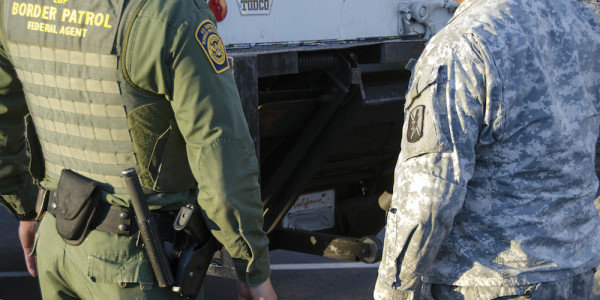The Army is currently experimenting with a piece of technology as part of its Next Generation Squad Weapon (NGSW) effort designed to enhance a soldier’s aim by stabilizing a weapon’s barrel against unnecessary or unintended movement, Task & Purpose has learned.
The so-called Aim Control Enhancer (ACE), originally developed as part of U.S. Special Operations Command’s now-abandoned ‘Iron Man’ suit effort, is currently undergoing evaluation “for possible use” with the NGSW, according to Peter Rowland, a spokesman for the Army’s Program Executive Office Soldier.
The Army “continues to manage multiple research, development, test & evaluation efforts, including ACE, as part of its mission to increase Soldier Lethality,” Rowland told Task & Purpose in a statement, noting that projects like ACE are separate from the service’s current prototyping efforts for the NGSW. “As a matter of policy, details of ongoing evaluations are not available for public release.”

The system, which attaches to the Picatinny rail that’s a standard feature of most military rifles, can best be described as a ‘mechanical isolator’ for a soldier’s support hand, according to Matt Angle, the Wyoming-based electrical engineer who originally developed the system before piquing the U.S. military’s interest at a government-sponsored innovation summit in Austin, Texas back in 2016.
According to the original Small Business Innovation Research (SBIR) contract for the ACE, the system is elegant in its simplicity: “A user selects a target or a direction, and then the system holds the weapon in the proper orientation. This effort seeks to merely correct for the shaking of the weapon that is not controllable by the user.”
“I can prevent the barrel from moving in ways I don’t want it to,” Angle told Task & Purpose in an interview. “Basically, you grab the device, and there’s a mechanical linkage system that keeps the barrel still in certain ways. It doesn’t automatically aim, but the whole thing is closer to image stabilization in a camera lens — as your hand shakes, the system moves to keep the barrel still.”
The ACE was originally developed under the moniker of a ‘small arms stabilization’ system under a 2017 SOCOM contract as part of the command’s Tactical Assault Light Operator Suit (TALOS), better known as the ‘Iron Man’ suit among the defense press for its futuristic vision of an operator clad in powered armor.
The small arms stabilization system was one of several subsystems that the Pentagon flagged as mature enough for “further maturation and testing” when the TALOS program shut down in 2019 after failing to yield an integrated suit of armor that SOCOM leaders had originally promised.
Indeed, the small arms stabilization unit was on display during the 2019 Special Operations Forces Industry Conference in Tampa, Florida when SOCOM officials revealed that U.S. special operators were currently field testing an ultralight version of the TALOS body armor called the Lightweight Polyethylene (PE) Armor for Extremity Protection.
The Army in Sept. 2019 selected General Dynamics-OTS, AAI Corporation Textron Systems, and Sig Sauer to develop prototypes of the NGSW’s carbine and automatic rifle variants chambered in 6.8mm.
More than 600 soldiers and Marines have contributed thousands of hours to the first of several soldier touchpoints, events designed to elicit direct user feedback “in operationally relevant scenarios during developmental testing,” as Army spokeswoman Bridgett Siter previously told Task & Purpose.
According to the Army, the prototyping phase is scheduled to continue through the summer of 2021 with the goal of eventually down-selecting a single weapon vendor to produce the NGSW’s carbine and automatic rifle variants and its accompanying 6.8mm ammunition.
The NGSW program is still on pace to eventually field two weapons — a rifle and an automatic rifle — to U.S. soldiers by 2022, which will replace both the M4 carbine and the M249 Squad Automatic Weapon in infantry arsenals.
Related: The inside story behind the Pentagon’s ill-fated quest for a real-life ‘Iron Man’ suit


